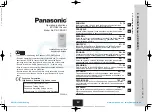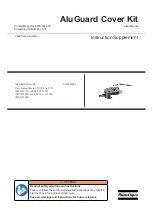
Alliance Intelligent Battery Series
TM
User’s Guide
© 2020 American Battery Solutions Inc. All rights reserved. The data herein is intended as a guide and does not reflect the specification range for any particular property of this
product. Such data is based upon analysis of representative samples and not the actual product shipped. We based the information on data believed to be reliable on the date
compiled, but we do not represent, warrant, or otherwise guarantee, expressly or impliedly, the merchantability, fitness for a particular purpose, freedom from patent
infringement, suitability, accuracy, reliability, or completeness of this information or the products, materials or processes described.
Page 14
Regulations Overview
Rechargeable lithium-ion cells and batteries are considered Dangerous Goods. The
regulations that govern their transport are based on the UN Recommendations on the
Transport of Dangerous Goods Model Regulations. Transport of dangerous goods is
regulated internationally by:
•
International Civil Aviation Organization (ICAO) Technical Instructions
•
International Air Transport Association (IATA) Dangerous Goods
Regulations
•
International Maritime Dangerous Goods (IMDG) Code
In the United States, transportation of hazardous material (Dangerous Goods) is
regulated by Title (part) 49 of the Code of Federal Regulations or CFR’s.
Title 49 CFR Sections 100-185 of the U.S. Hazardous Materials Regulations (HMR)
contains the requirements for transporting cells and batteries. Refer to the following
sections within 49 CFR for specific information.
•
Section 173.185 – Shipping requirements for lithium cells and batteries
•
Section 172.102 – Special Provisions
•
Sections 172.101, 178 – Further information and specifications on packaging
The Office of Pipeline and Hazardous Materials Safety Administration (PHMSA), which
is within the U.S. Department of Transportation (DOT), is responsible for drafting and
writing the U.S. regulations that govern the transportation of hazardous materials (also
known as dangerous goods) by air, ground, and ocean.
Regulations by Cell/Battery Size
Lithium-ion batteries and cells are considered Class 9, which is one of nine classes
of hazardous materials or dangerous goods defined in the regulations. As a Class 9
material, cells and batteries must meet UN testing and packaging requirements as
well as shipping regulations.















































